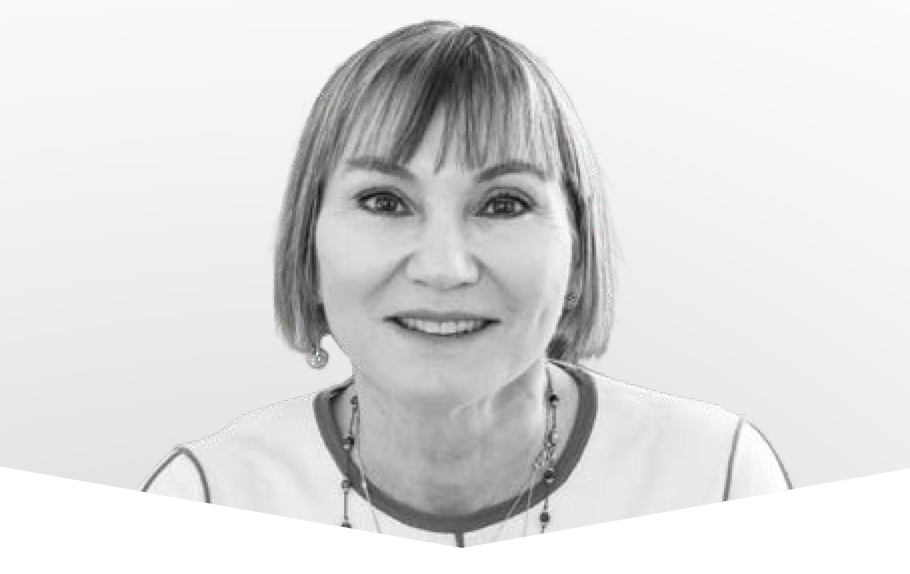The importance of skin quality, a non negligeable capital.
Dr Marie-Thérèse Bousquet
 We often have a nostalgic view and critical opinion of our own skin. We see everyone else’s skin as lovely, whereas ours is too oily, too thin, too sensitive… We all want baby-soft skin. It calls upon three of our senses: touch, smell and sight. Teenagers and young adults camoufl age it with a layer of foundation, mistreat it through overexposure: we all want to look well, get a tan. From a very young age, this fragile organ is subjected to so many aggressions. Our role is to be more aware of this. Of course, we cannot and should not stop time, but rather try to maintain our youth capital and compensate for the multifactorial phenomena that affect our skin. Any efforts we make will be rewarded. Two important types of skin aging can be resumed here; each one corresponds to a different kind of treatment plan to preserve the patient’s skin capital:
We often have a nostalgic view and critical opinion of our own skin. We see everyone else’s skin as lovely, whereas ours is too oily, too thin, too sensitive… We all want baby-soft skin. It calls upon three of our senses: touch, smell and sight. Teenagers and young adults camoufl age it with a layer of foundation, mistreat it through overexposure: we all want to look well, get a tan. From a very young age, this fragile organ is subjected to so many aggressions. Our role is to be more aware of this. Of course, we cannot and should not stop time, but rather try to maintain our youth capital and compensate for the multifactorial phenomena that affect our skin. Any efforts we make will be rewarded. Two important types of skin aging can be resumed here; each one corresponds to a different kind of treatment plan to preserve the patient’s skin capital:
1. Intrinsic chronological aging: These are the modifications observed in areas that are pro-tected from the sun: we might see changes to the epidermis, which becomes thinner, more fragile and drier. The dermis loses its elasticity, the hypodermis wastes away. This leads to a loss of elasticity, dry skin and the appearance of fine lines.
2. Actinic aging or heliodermia: This is photo-aging, which overlays physiological aging. The parts of the body that are exposed to the sun accumulate additional modifications. Pigmentation marks appear, and in defence, the skin thickens and dries out, which increases the depth of the wrinkles.
In each of these situations, a detailed diagnosis should be made in the first appointment and it should be reassessed throughout the patient’s life. Our first contact with the patient is in this first appointment. This consultation is essential for getting the message through, for making them understand that a preventative routine is a constructive routine. It is important that we ask our patients about their habits in order to work out what needs to be done. We glean the information we need, then suggest medical procedures and care routines that they might adopt.
It is within this framework that Profhilo®, an ultra-pure hyaluronic acid injectable, can be offered and used for either young patients to main hydration, or in more mature patients. In the latter case, Profhilo® might be combined with other treatments in order to respond the patient’s specific requirements. In fact, with Profhilo®, thanks to its NAHYCO® manufacturing technology, we achieve unparalleled bio revitalisation in all three layers of the skin (epidermis, dermis, hypodermis).
It is this bio revitalisation that provides the skin quality we seek, as well as potentiating any other aesthetic treatments (lasers, radiofrequency, etc.) that might be required to achieve the desired results in more mature patients. As a reminder, Profhilo®, which was developed by IBSA Derma research, is a stable formula of 100% pure hyaluronic acid whose molecules are thermally linked to one another.
There are no other chemical products in its formulation, and the finished pro-duct spreads quickly and easily into the tissues to stimulate the fibroblasts for an anti-sagging action on the skin. The basic protocol includes two sessions of injections spaced two months apart, and can be applied to the face and to any fragile areas of the body: belly, inner arms, knees and hands.
It is important to age well while looking natural, which is why a pro-duct like Profhilo® – which is designed to restore the skin quality – is so important in our arsenal of treatments, making it a core approach. This approach might be combined with other products and tech-niques as part of a global treatment plan, such as surface stimulation (non-ablative lasers, radiofrequency, LEDs), peels and fi ller products, if required.
After the summer holidays, treating the skin quality, the skin’s sur-face, is vital in order to recover its lost luminosity and tonicity, and prepare the skin for the winter.
This is why we have put together protocol in our practice that offers superb results for patients of all ages. Up to age 40, this protocol can be carried out on its own, as the results are generally suffi cient on their own. For patients aged 50 to 60, it might be performed as a complement to deeper treatments such as threads or hyaluronic acid injections, to reposition the tissues and improve any sagging that has set in after the menopause.
What does it involve?
We alternate between Profhilo® injections, whose aim is maintenance, and optimising the results with PRX T33 or the Prodeep laser. PRX T33 is a topical treatment (kojic acid, trichloroacetic acid and hydrogen peroxide solution) that can be combined with Profhilo® in the following way: Day 0 – Profhilo®, then three successive PRX T33 treatments spaced 10 days apart, Day 30 – Profhilo® and a final session of PRX T33.
A top-up session of Profhilo® can be carried out after 6 months, and we might recommend another series of PRX T33 treatments the following year, or a top-up session every 3-4 months. Another possible combined treatment involves associating Profhilo® with the Prodeep laser. This non-ablative YAP laser has a wavelength that can penetrate easily into the skin, for better control of the coagulation effect. The protocol involves two treatments with Profhilo®, spaced a month apart, and two laser treatments, with a top-up session every 6 months. For acne-prone skin, the Prodeep treatment might be longer, and in this particular case the top-up session is carried out after 3-4 months.
The results?
Plumped, smoother skin, a radiant complexion, a face that looks well- rested and radiates good health. Of course, the high quality of products like Profhilo® and the different techniques with which it can be combined are not enough. We also need the patient’s commitment to optimise our results: regular treatments combined with a healthy lifestyle, a balanced diet, good hydration and good sleep quality, not forgetting a personalised daily skincare routine that includes antioxidants and dermo-cosmetic sun protection. It is not complicated or impossible, it just requires the right chemistry.
 Dr Marie-Thérèse Bousquet, Aesthetic Doctor: 27 years of practice Doctor of General Medicine – University of Lille University Degree in Evaluation and Control of Injection and Filling Techniques in Dermatology – Paris Descartes University – Paris 5 Member of SFME and AFME. Expert and speaker in scientific congresses.
Dr Marie-Thérèse Bousquet, Aesthetic Doctor: 27 years of practice Doctor of General Medicine – University of Lille University Degree in Evaluation and Control of Injection and Filling Techniques in Dermatology – Paris Descartes University – Paris 5 Member of SFME and AFME. Expert and speaker in scientific congresses.
More informations: drmtbousquet.com












